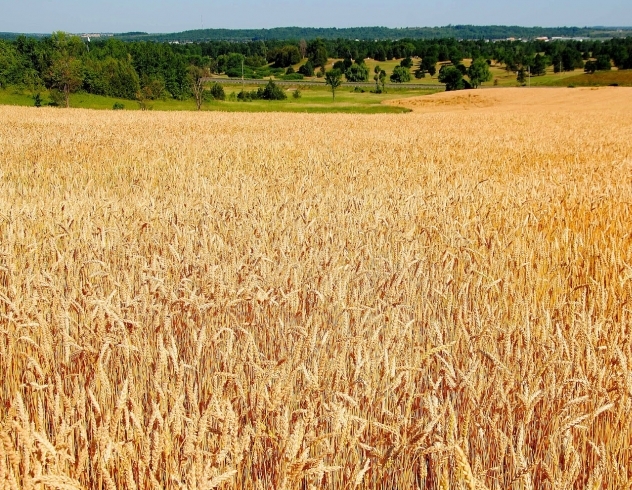News & Events

Crop Corner – Assessing Winter Wheat Survival
May 01, 2015

Favourable conditions last fall allowed for two stages of winter wheat planting. The first planting was in the beginning of October and the second planting was towards the end of October until the crop insurance cut-off. Wheat that was planted in the beginning of October began to break dormancy at the beginning of April and is looking great; it had an excellent start in the fall and was able to grow thick before the onset of winter. The other half of the wheat was planted late in cool conditions, which means that much of the wheat was only partially emerged with an inadequate root system before winter began. The stage of winter wheat development in the fall directly reflects the winter survival and yield potential of the crop in the spring.
We were fortunate this winter to have snow cover throughout the coldest months, which insulates the crop from ice & heaving and protects it until the spring thaw. It’s hard to believe but all that snow may have saved your crop! Early in May you will have to make a choice whether to keep your winter wheat crop or kill it and plant into corn or soybeans. An optimum plant stand is 20 to 30 plants per square foot. However wheat is incredibly resilient and a crop with 7 plants per square foot will still have 90% of its yield potential, provided the field is uniform. If less than 10% of the field has suffered winter kill and the rest of the field appears good then I would recommend keeping it.
If you feel you have a less than ideal stand of winter wheat, but you wish to keep it for its straw value or rotational reasons, there are a couple of management options that can help get the most of your crop. An early application of nitrogen as soon as the ground is fit will help give struggling winter wheat crops a boost and will encourage tillering. Aim for 100lb/ac N, but if the crop looks good you can increase this rate to 120-150lb N. An early season fungicide (Stratego Pro, Twinline, Acapela) will protect against leaf diseases and can increase straw quality and quantity. A thin crop may have a hard time competing with weeds, so you may have to spray a herbicide such as Buctril M or Infinity to keep weeds under control and out of bare patches. Infinity is your best herbicide choice if there are Canada Fleabane plants detected and the crop is not under seeded with clover.
As we have seen time and time again, at the end of the day the most important factor for a great winter wheat crop is timely planting in the fall and favourable winter conditions. Wheat is an important crop for rotational reasons, however it also helps growers to split their workload and to combat weed resistance. Don’t be discouraged! For further information give your Sales Agronomist a call at Clark Agri Service.
This Crop Corner has been written by Melody Robinson, Sales Agronomist at Clark Agri Service. Melody can be reached by email mrobinson@clarkagriservice.com or by phone 289-775-1188